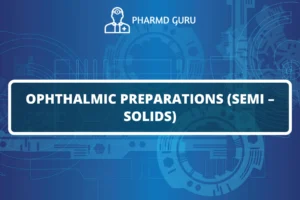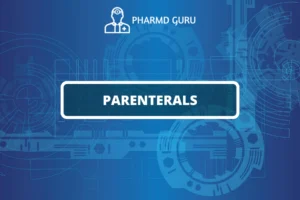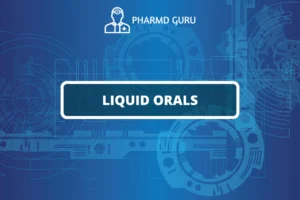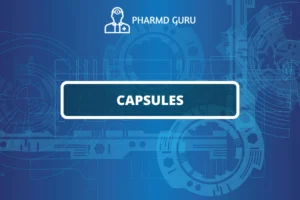Controlled and novel drug delivery systems are innovative approaches in the field of pharmaceutical technology that aim to optimize the delivery of medications to enhance therapeutic outcomes, patient compliance, and safety. These systems offer controlled release, targeted delivery, and improved bioavailability of drugs. In this article, we will explore the definition and concept of controlled and novel drug delivery systems, along with examples of different routes of administration, including parenteral, transdermal, buccal, rectal, nasal, implants, and ocular systems.
SCROLL DOWN TO THE BOTTOM OF THE PAGE FOR ACTUAL NOTES
Table of Contents
- Introduction to Controlled and Novel Drug Delivery Systems
- Definition of Controlled Drug Delivery Systems
- Concept of Controlled Drug Delivery Systems
- Examples of Controlled Drug Delivery Systems
- 4.1 Parenteral Drug Delivery Systems
- 4.2 Transdermal Drug Delivery Systems
- 4.3 Buccal Drug Delivery Systems
- 4.4 Rectal Drug Delivery Systems
- 4.5 Nasal Drug Delivery Systems
- 4.6 Implantable Drug Delivery Systems
- 4.7 Ocular Drug Delivery Systems
1. Introduction to Controlled and Novel Drug Delivery Systems
Controlled and novel drug delivery systems refer to innovative approaches that optimize the delivery of pharmaceutical substances to achieve desired therapeutic effects. These systems are designed to overcome the limitations of conventional drug delivery methods, such as immediate drug release and lack of site-specific targeting.
2. Definition of Controlled Drug Delivery Systems
Controlled drug delivery systems involve the delivery of medications at a controlled rate and duration to maintain therapeutic drug levels within the desired range. These systems aim to provide a more precise and predictable release profile of drugs, leading to improved efficacy and reduced side effects.
3. Concept of Controlled Drug Delivery Systems
The concept of controlled drug delivery systems revolves around modifying the release kinetics of drugs, controlling their distribution within the body, and achieving site-specific targeting. Various mechanisms are employed to control drug release, including diffusion, osmosis, erosion, and external stimuli triggers. By regulating drug release, these systems can provide sustained, pulsatile, or targeted drug delivery.
4. Examples of Controlled Drug Delivery Systems
4.1 Parenteral Drug Delivery Systems
Parenteral drug delivery systems involve the administration of drugs via injection, bypassing the gastrointestinal tract. These systems include:
- Liposomes: Liposomes are small vesicles composed of lipid bilayers that can encapsulate drugs for targeted delivery.
- Microspheres: Microspheres are spherical particles that release drugs slowly, allowing for sustained release and localized delivery.
- Nanoparticles: Nanoparticles are small-sized particles that can encapsulate drugs and enable controlled drug release and targeted delivery.
- Lipid-based Systems: Lipid-based drug delivery systems, such as lipid nanoparticles and solid lipid nanoparticles, offer improved drug stability and controlled release.
4.2 Transdermal Drug Delivery Systems
Transdermal drug delivery systems involve the administration of drugs through the skin for systemic effects. Examples include:
- Transdermal Patches: Transdermal patches are adhesive patches containing drug formulations that release medication through the skin into the bloodstream over a prolonged period.
- Transdermal Gels: Transdermal gels are semisolid formulations that allow for controlled drug release through the skin.
4.3 Buccal Drug Delivery Systems
Buccal drug delivery systems involve the administration of drugs through the mucosal lining of the oral cavity. Examples include:
- Buccal Tablets: Buccal tablets are designed to adhere to the buccal mucosa, allowing for controlled drug release and systemic absorption.
- Buccal Films: Buccal films are thin, flexible sheets that adhere to the oral mucosa and deliver drugs for localized or systemic effects.
4.4 Rectal Drug Delivery Systems
Rectal drug delivery systems involve the administration of drugs through the rectal route. Examples include:
- Rectal Suppositories: Rectal suppositories are solid dosage forms that melt or dissolve in the rectum to release drugs for systemic effects.
- Rectal Gels: Rectal gels are semisolid formulations designed for rectal administration, enabling controlled drug release.
4.5 Nasal Drug Delivery Systems
Nasal drug delivery systems involve the administration of drugs through the nasal cavity. Examples include:
- Nasal Sprays: Nasal sprays deliver drugs in the form of fine droplets, allowing for rapid absorption and systemic or localized effects.
- Nasal Gels: Nasal gels are semisolid formulations that provide controlled drug release through the nasal mucosa.
4.6 Implantable Drug Delivery Systems
Implantable drug delivery systems involve the insertion of devices or implants that release drugs over an extended period. Examples include:
- Implantable Drug Pellets: Implantable drug pellets are small solid or semisolid formulations that provide sustained drug release.
- Implantable Devices: Implantable devices, such as osmotic pumps or biodegradable implants, deliver drugs at a controlled rate.
4.7 Ocular Drug Delivery Systems
Ocular drug delivery systems involve the administration of drugs to the eyes for the treatment of various eye conditions. Examples include:
- Ophthalmic Inserts: Ophthalmic inserts are small devices placed in the conjunctival sac that release drugs for localized or systemic effects.
- Ophthalmic Suspensions: Ophthalmic suspensions are liquid formulations that deliver drugs to the eye and provide controlled drug release.
ACTUAL NOTES




